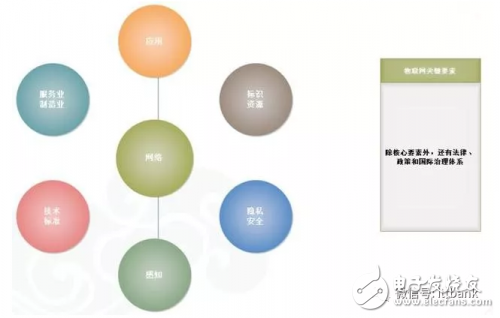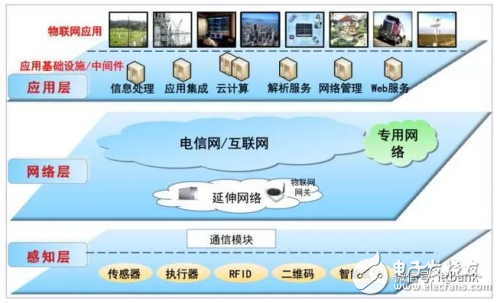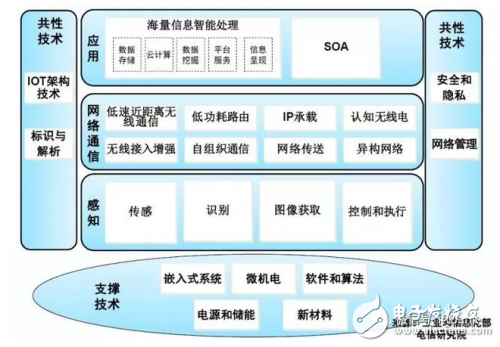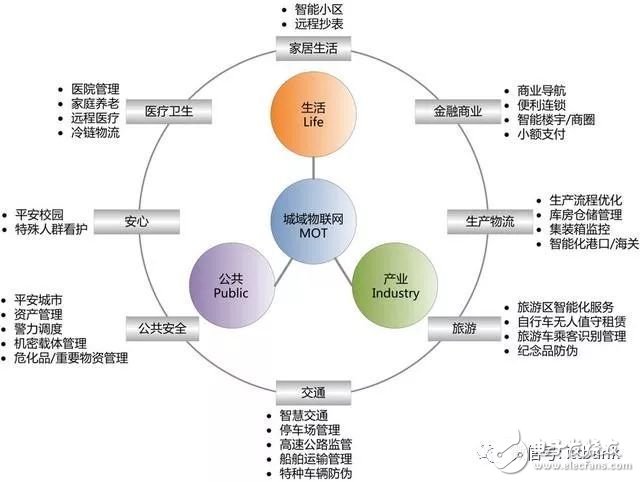The original concept of the Internet of Things, widely believed in the country is Professor MIT Auto-ID Center Professor Ashton first proposed in the research of RFID in 1999, also known as sensor network, defined as: through radio frequency identification (RFID), Infrared sensing, global positioning system, laser scanner and other information sensing devices, in accordance with the agreed agreement, any item connected to the Internet, for information exchange and communication, to achieve intelligent identification, positioning, tracking, monitoring and management Network concept.
In the report of the same name issued by the International Telecommunication Union (ITU) in 2005, the definition of the Internet of Things has changed, and the coverage has been greatly expanded. It is no longer just an Internet of Things based on RFID technology. It is proposed at any time, anywhere, The interconnection of any object, the ubiquitous network and the vision of ubiquitous computing, the technology of the initial RFID technology, sensor technology, nanotechnology, intelligent terminal and so on have also been more widely used today.
In China, the concept of the Internet of Things has been deeply rooted in the hearts of the people through the support of the government and enterprises. The Internet of Things (IoT) has been labeled as "Chinese", meaning that the Internet of Things is the ubiquitous end equipment and facilities, including sensors with "intrinsic intelligence", mobile terminals, industrial systems, and building control. Systems, home intelligence facilities, video surveillance systems, etc., and "external enablement", such as RFID-attached assets, individuals and vehicles carrying wireless terminals, etc. "smart parts or animals" or "smart "Dust", through various wireless and limited long-distance and short-distance communication networks to achieve interoperability (M2M), application integration, and computer-based SaaS operation mode, in the internal network, private network, Internet environment, the adoption Appropriate information security mechanism, providing real-time online monitoring, location and traceability, alarm linkage, dispatching command, plan management, remote control, security defense, remote maintenance, online upgrade, statistical report, decision support Such as management and service functions, to achieve the "management, control, and battalion" integration of "all things" efficient, energy-saving, safe and environmentally friendly.
Internet of Things system

[Essential elements of the Internet of Things]
Key elements of the development of the Internet of Things include network architectures consisting of perception, network and application layers, Internet of Things technologies and standards, including IoT-related industries such as services and manufacturing, resource systems, privacy and security, and promotion and regulation. Law, policy and international governance systems for networking development.
IoT network architecture

The IoT network architecture consists of a sensing layer, a network layer, and an application layer.
The sensing layer implements intelligent sensing recognition, information collection processing, and automatic control of the physical world, and connects the physical entity to the network layer and the application layer through the communication module.
The network layer mainly implements information transmission, routers and control, including extended network, access network and core network. The network layer can rely on the public telecommunication network and the Internet, and can also rely on industry-specific communication resources.
The application layer includes application infrastructure/middleware and various IoT applications. Application infrastructure/middleware provides IoT applications with common infrastructure services, capabilities, and resource invocation interfaces for information processing and computing. Based on this, IoT enables various applications in many fields.
Internet of Things Technology System
The Internet of Things involves technologies such as sensing, control, network communication, microelectronics, software, embedded systems, and micro-electromechanics. Therefore, there are many key technologies covered by the Internet of Things. In order to systematically analyze the Internet of Things technology system, the Internet of Things technology system is divided. To perceive key technologies, key technologies for network communication, key technologies for application, common technologies, and supporting technologies.

Perception, network communication and application key technologies
Sensing and recognition technology is the primary link in the Internet of Things to perceive the physical world to obtain information and realize object control. The sensor transforms the physical quantity, chemical quantity and biomass in the physical world into digital signals for processing, and the identification technology realizes in the Internet of Things. Acquisition of object identification and location information.
Key technologies of network communication
Network communication technology mainly realizes two-way transmission, routing and control of IoT information and control information, focusing on low-speed short-range wireless communication technology, low-power routing, self-organizing communication, wireless access M2M communication enhancement, IP bearer technology, network transmission. Technology, heterogeneous network convergence technology and cognitive radio technology.
Application key technology
Massive information intelligent processing uses high-performance computing, artificial intelligence, database and fuzzy computing technologies to perform general processing on collected sensory data, focusing on data storage, parallel computing, data mining, platform services, information presentation, etc. Architecture (SOA) is a loosely coupled software component technology that modularizes the different functions of an application and connects them through standardized interfaces and invocations for fast and reusable system development and deployment.
Support technology
IoT support technologies include embedded systems, MEMS, software and algorithms, power and energy storage, and new materials technologies.
Common technology
IoT common technology design network at different levels, including architecture technology, identification and resolution, security and privacy, network management technology.
Internet of Things Standardization System
The Internet of Things standard is the commanding height of international IoT technology competition. Since the Internet of Things involves different professional technical fields and application sectors of different industries, the standards of the Internet of Things should cover both basic public technologies for different applications and technologies that meet the specific needs of the industry. Standards: including national standards as well as industry standards.
The Internet of Things standard system is relatively complicated. If the Internet of Things, perception layer, network layer, application layer, and common key technology standard system are five levels, the standard system can be initially constructed.
Internet of Things General Standard
Including IoT guidelines, the overall structure of the Internet of Things, and IoT business needs.
Perceptual layer standard system
Mainly related to electrical and data interfaces of various information acquisition devices such as sensors, perceptual data models, general technical standards for description languages ​​and data structures, RFID tags and reader interfaces and protocol standards, and industry-specific and application-related perceptual layer technical standards. Wait.
Network layer standard system
Mainly related to IoT gateway, short-range wireless communication, self-organizing network, simplified IPv6 protocol, low-power routing, enhanced machine-to-machine wireless access and core network standards, M2M modules and platforms, network resource virtualization standards, Convergence of network standards, etc.
Application layer standard system
Including application layer architecture, information intelligence processing technology, and industry, public application class standards. The application layer architecture focuses on object-oriented service architecture, including SOA architecture, process management for upper-layer application services, communication protocols between business processes, metadata standards, and SOA security architecture standards. Information intelligence processing technology standards include cloud computing, data storage, data mining, massive intelligent information processing and rendering. The core of cloud computing technology standards includes open cloud computing interfaces, cloud computing open virtualization architecture (resource management and control), cloud computing interoperability, and cloud computing security architecture.
Common key technology standard system
Includes identification and resolution, quality of service, security, and network management technology standards.
Identification and resolution standards include coding, resolution, authentication, encryption, privacy protection, management, and multi-identity interworking standards.
Security standards focus on security architecture, security protocols, authentication and encryption technologies that support multiple network convergence, user and application privacy protection, virtualization and anonymization, and service-oriented adaptive security technology standards.
Internet of Things Industry

[Industry System]
The Internet of Things-related industries refer to the collection of related industries necessary for the realization of the Internet of Things function. The industrial structure mainly includes the two major categories of service industry and manufacturing industry.
The Internet of Things manufacturing industry is dominated by the cognitive device manufacturing industry. The high intelligence of the sensing device is closely related to the embedded system. The high precision of the device is inseparable from integrated circuits, embedded systems, micro-nano devices, new materials, and micro- Support for basic industries such as energy. Some computer equipment and network communication equipment are also part of the Internet of Things manufacturing industry.
The Internet of Things service industry mainly includes the Internet of Things, the Internet service industry, the Internet of Things application infrastructure service industry, the Internet of Things software development and application integration service industry, and the Internet of Things application service industry. The Internet of Things application infrastructure service industry mainly includes the cloud. Computing services, storage services, etc., IoT software development and integration services can be subdivided into basic software services, middleware services, application software services, intelligent information processing services and system integration services, and IoT application services can be divided into industry services. , public services and support services.
Most of the Internet of Things industry belongs to the information industry, but it also involves other industries, such as smart meters. The development of the Internet of Things industry is not a re-statistical division of the existing information industry, but a new market and a new form through application. There are three situations that can be divided into:
1. The improvement of existing industries due to IoT applications is mainly reflected in the upgrading of products. For example, sensors, RFID, and instrumentation have been developed for decades. As the use of IoT applications is upgraded to intelligent networks, product functions are realized. The application scope and market scale have expanded tremendously, and the sensor industry and RFID industry have become the core of the Internet of Things-aware terminal manufacturing industry.
2. The horizontal market expansion of existing industries due to IoT applications is mainly reflected in the extension of the field and the expansion of quantity. For example, servers, software, embedded systems, cloud computing, etc. have expanded into new market demands due to IoT applications, forming new growth points.
3. Unique markets and services created and derived by IoT applications, such as sensor network equipment, M2M communication equipment, and services, IoT application services, etc., are new formats developed after the development of the Internet of Things, unique to the Internet of Things. .

Piezo Ceramic Sounding Plate,Full Range Piezo Ceramic Buzzer Element,Piezoelectric Ceramic Diaphragm
NINGBO SANCO ELECTRONICS CO., LTD. , https://www.sancobuzzer.com